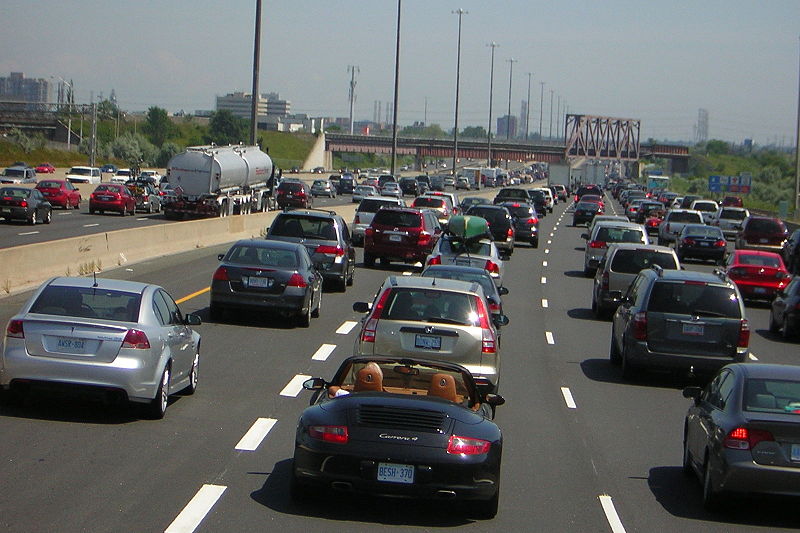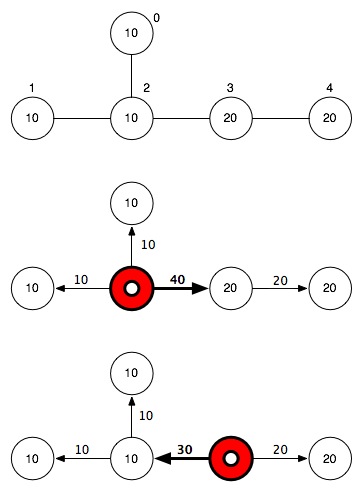IOI '10 P6 - Traffic Congestion (Standard I/O)
View as PDF
Although Canada is a large country, many areas are uninhabited, and most of the population lives near the southern border. The Trans-Canada Highway, completed in 1962, connects the people living in this strip of land, from St. John's in the East to Victoria in the West, a distance of 7821 km.
Canadians like hockey. After a hockey game, thousands of fans get in their cars and drive home from the game, causing heavy congestion on the roads. A wealthy entrepreneur wants to buy a hockey team and build a new hockey arena. Your task is to help him select a location for the arena to minimize the traffic congestion after a hockey game.
The country is organized into cities connected by a network of roads. All roads are bidirectional, and there is exactly one route connecting any pair of cities. A route connecting the cities and
is a sequence of distinct cities
such that there is a road from
to
for each
. The new arena must be built in one of the cities, which we will call the arena city.
After a hockey game, all of the hockey fans travel from the arena city to their home city, except those who already live in the arena city. The amount of congestion on each road is proportional to the number of hockey fans that travel along the road. You must locate the arena city such that the amount of congestion on the most congested road is as small as possible. If there are several equally good locations, you may choose any one.
Input Specification

The first line of input is a positive integer , the number of cities. The cities are numbered from
to
.
The next line of input will contain an array of
positive integers; for each
,
is the number of hockey fans living in the city numbered
. The total number of hockey fans in all the cities will be at most
.
The next lines will each contain 2 integers, representing the arrays
and
, respectively.
and
are arrays of
integers each, specifying the locations of roads. For each
, there is a road connecting the two cities whose numbers are
and
.
Output Specification
A single integer, the number of the city that should be the arena city.
Example
As an example, consider the network of five cities in the top diagram on the right, where cities ,
and
contain
hockey fans each, and cities
and
contain
hockey fans each. The middle diagram shows the congestions when the new arena is in city
, the worst congestion being
on the thicker arrow. The bottom diagram shows the congestions when the new arena is in city
, the worst congestion being
on the thicker arrow. Therefore, city
would be a better location for the arena than city
. The data for this example is shown in the sample input below.
Sample Input
5
10 10 10 20 20
0 2
1 2
3 2
4 3Sample Output
3Subtask 1 [25 points]
Assume that all the cities lie in a straight line from East to West, and that the roads all follow this straight line with no branches. More specifically, assume that for all with
and
.
There are at most cities.
Subtask 2 [25 points]
Make the same assumptions as in Subtask 1, but there are at most cities.
Subtask 3 [25 points]
The assumptions from Subtask 1 may no longer be true.
There are at most cities.
Subtask 4 [25 points]
The assumptions from Subtask 1 may no longer be true.
There are at most cities.
Comments